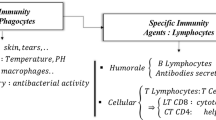Abstract
Inspired by the self/nonself discrimination theory of the natural immune system, the negative selection algorithm (NSA) is an emerging computational intelligence method. Generally, detectors in the original NSA are first generated in a random manner. However, those detectors matching the self samples are eliminated thereafter. The remaining detectors can therefore be employed to detect any anomaly. Unfortunately, conventional NSA detectors are not adaptive for dealing with time-varying circumstances. In the present paper, a novel neural networks-based NSA is proposed. The principle and structure of this NSA are discussed, and its training algorithm is derived. Taking advantage of efficient neural networks training, it has the distinguishing capability of adaptation, which is well suited for handling dynamical problems. A fault diagnosis scheme using the new NSA is also introduced. Two illustrative simulation examples of anomaly detection in chaotic time series and inner raceway fault diagnosis of motor bearings demonstrate the efficiency of the proposed neural networks-based NSA.








Similar content being viewed by others
References
de Castro LN, Timmis J (2002) Artificial immune systems: a new computational intelligence approach. Springer, London
Dasgupta D, Attoh-Okine N (1997) Immunity-based systems: a survey. In: Proceedings of the IEEE international conference on systems, man, and cybernetics, Orlando, FL, pp 369–374
Garrett SM (2005) How do we evaluate artificial immune systems?. Evol Comput 13(2):145–178
Dasgupta D (2006) Advances in artificial immune systems. IEEE Comput Intell Mag 1(4):40–49
Forrest S, Perelson AS, Allen L, Cherukuri R (1994) Self-nonself discrimination in a computer. In: Proceedings of the IEEE symposium on research in security and privacy, Los Alamos, CA, pp 202–212
Stibor T, Mohr P, Timmis J, Eckert C (2005) Is negative selection appropriate for anomaly detection? In: Proceedings of the genetic and evolutionary computation conference, Washington D.C., pp 321–328
Dasgupta D, González F (2002) An immunity-based technique to characterize intrusions in computer networks. IEEE Trans Evol Comput 6(3):281–291
Dasgupta D, Forrest S (1995) Tool breakage detection in milling operations using a negative selection algorithm. Technical Report CS95-5, Department of Computer Science, University of New Mexico, Albuquerque, NM
Dasgupta D, KrishnaKumar K, Wong D, Berry M (2004) Negative selection algorithm for aircraft fault detection. In: Proceedings of the 3rd international conference on artificial immune systems, Catania, Sicily, Italy, pp 1–13
Ji Z, Dasgupta D (2006) Applicability issues of the real-valued negative selection algorithms. In: Proceedings of the genetic and evolutionary computation conference, Seattle, WA, pp 111–118
González F (2003) A study of artificial immune systems applied to anomaly detection. Ph.D. Dissertation, Division of Computer Science, University of Memphis, Memphis, TN
González F, Dasgupta D, Nino LF (2003) A randomized real-value negative selection algorithm. In: Proceedings of the 2nd international conference on artificial immune systems, Edinburgh, UK, pp 261–272
Stibor T, Timmis J, Eckert C (2005) A comparative study of real-valued negative selection to statistical anomaly detection techniques. In: Proceedings of the 4th international conference on artificial immune systems, Banff, Alberta, Canada, pp 262–275
Haykin S (1998) Neural networks, a comprehensive foundation, 2nd edn. Prentice-Hall, Upper Saddle River
Frank PM (1990) Fault diagnosis in dynamic systems using analytical and knowledge-based redundancy—a survey and some new results. Automatica 26(3):459–474
Chow MY (1997) Methodologies of using neural network and fuzzy logic technologies for motor incipient fault detection. World Scientific Publishing, Singapore
Mackey MC, Glass L (1977) Oscillation and chaos in physiological control systems. Science 197:287–289
Li B, Chow MY, Tipsuwan Y, Hung JC (2000) Neural-network-based motor rolling bearing fault diagnosis. IEEE Trans Ind Electron 47(5):1060–1069
Gao XZ, Ovaska SJ, Wang X, Chow MY (2006) Clonal optimization of negative selection algorithm with applications in motor fault detection. In: Proceedings of the IEEE international conference on systems, man, and cybernetics, Taipei, Taiwan, pp 5118–5123
Acknowledgments
This research work was funded by the Academy of Finland under Grant 214144. The authors would like to thank the anonymous reviewers for their insightful comments and constructive suggestions that have improved the paper.
Author information
Authors and Affiliations
Corresponding author
Rights and permissions
About this article
Cite this article
Gao, X.Z., Ovaska, S.J., Wang, X. et al. A neural networks-based negative selection algorithm in fault diagnosis. Neural Comput & Applic 17, 91–98 (2008). https://doi.org/10.1007/s00521-007-0092-z
Received:
Accepted:
Published:
Issue Date:
DOI: https://doi.org/10.1007/s00521-007-0092-z




